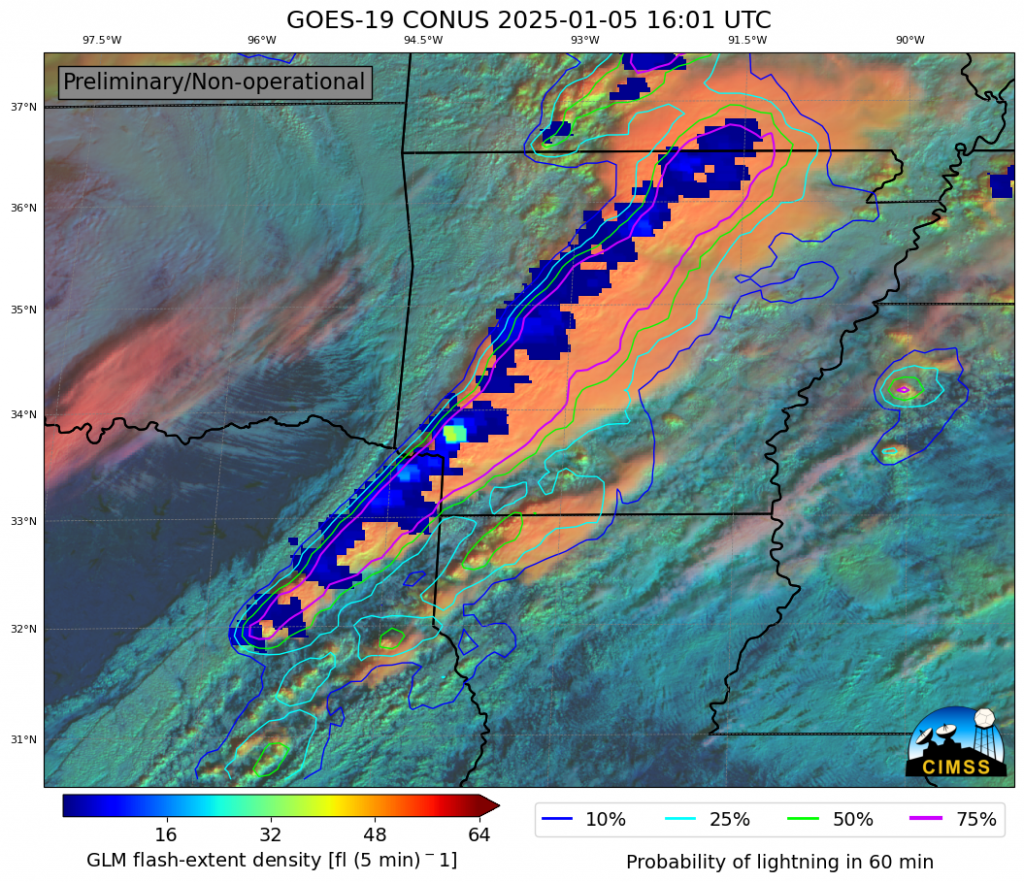LightningCast applied to new sensors
GOES-19 is slated to become the next operational GOES-East in April. Despite being trained on GOES-16 data, CIMSS and NOAA scientists have been busy evaluating the AI lightning-prediction model, LightningCast, on GOES-19 output to prepare for the operational transition and see how adaptable the model is.

Overall, the LightningCast output on GOES-19 looks to be in-line with performance on GOES-16. There are still some data-quality issues that the ABI imagery team is working on to fix, and once resolved, we can quantitatively compare LightningCast output from the two satellites more accurately.
In Europe, the Meteosat Third Generation (MTG) satellite, Meteosat-12, recently became operational. We have been able to get LightningCast to run on data from Meteosat-12’s Flexible Combined Imager (FCI), with surprisingly good results. We say “surprisingly,” because we expected that the differences between ABI’s and FCI’s spectral response functions and differences in channel resolutions would generate poor lightning predictions, since the model was trained on data only from GOES. On the contrary, the predictions look reasonable considering they are applied to FCI data with no re-training or fine-tuning. The animation below shows the sequence of LightningCast predictions, FCI day-cloud-phase-distinction RGB (background), and MTG’s Lightning Imager (LI) flash-extent density (foreground), over a scene in south eastern Africa, over the countries of Mozambique and Zimbabwe.
There are still some data quality issues with FCI (e.g., co-registration errors) and LI, but the predictions look reasonable for a first application to the new sensor. In this scene, there is over-prediction in the maritime region and under-prediction for some regions with lightning initiation. But we believe that with fine-tuning methods on a limited amount of FCI and LI data, LightningCast will perform well with MTG data without a significant re-training.
For users who want to run LightningCast on these sensors, the CSPP-Geo LightningCast package will soon have a patch that will enable it work fully with GOES-19, and an update is planned for full support of MTG data, though the date is not known at this time.
H/T: LightningCast software has made substantial use of the Satpy library to read and visualize data from geostationary satellites such GOES-R, MTG, and Himawari.
—————
Free Secure Email – Transcom Sigma
Transcom Hosting
Transcom Premium Domains
